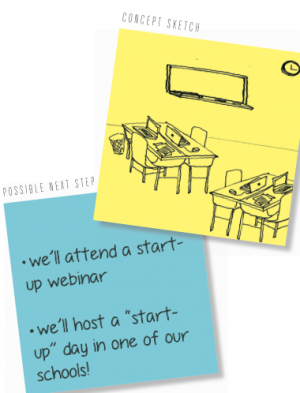
Deciding how a school or district should invest its limited resources is tough, and made even more difficult by the multitude of ed tech products that have exploded onto the market. Digital Promise, an organization created by Congress to spur innovation in education, has teamed up with the design firm IDEO to tackle the difficult question of procurement when it comes to technology. It’s a question of resources, how to spend them and the fears decision makers have about making mistakes with public dollars and everyone watching.
To get a handle on the challenges school districts face when it comes to purchasing new products, the two organizations brought together a group of district leaders, ed-tech entrepreneurs, education experts and non-profit leaders to identify challenges and brainstorm solutions. The report, Evolving Ed-Tech Procurement in School Districts, is by no means the end of the process, but it begins to frame the challenges and possible avenues for further study and reflection.
SIX BIG FEARS
District leaders identified the six things that most worry them as they think about the many technology options available to them.
- Public scrutiny and the fear that causes risk aversion
- Difficulties creating school culture that facilitates the uptake of new ed-tech solutions
- Cumbersome, time-consuming and overwhelming procurement regulations
- Difficulty navigating product options when so few reliable proof points exist
- Shifting and complex resources streams that make sustaining a choice a challenge
- Trust among peers is high, but trust by outsiders is low.
After identifying the pain points that put gray hairs on the heads of school administrators, the group tried to look outside the education industry for examples of how those challenges could be met in new ways. For example, to try and build a more receptive school culture, educators might look at the “My Starbucks Idea” model, where customers are encouraged to share product and service ideas and comment on others. The most popular or best suggestions are considered and developed by Starbucks staff. Another example for dealing with difficult procurement regulations could be creating a program similar to TurboTax that walks users through a step-by-step guide for the complicated process.


